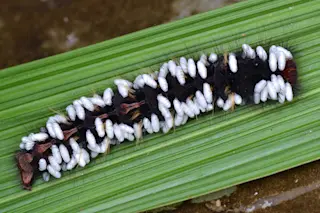On Tuesday, June 16, President Obama dazzled audiences during a CNBC interview by performing a difficult feat: He swatted a buzzing fly in one swift motion, leaving the creature lifeless on the carpet of the White House's East Room.
His swift blow was no small task: Flies are notoriously difficult to swat. In fact, they possess special skills that allow them to evade both flyswatters and human hands. They can place their body weight on their middle pair of feet—like all insects, they have three pairs—before they take off in flight, according to a study in Current Biology. This ability leaves them in a prime position to launch themselves in the opposite direction from where they anticipate the flyswatter will fall.
The insects are also covered with tiny hairs, called cilia, which sense even the minuscule changes in air pressure caused by a rapidly approaching hand. Additionally, their eyes have ...














